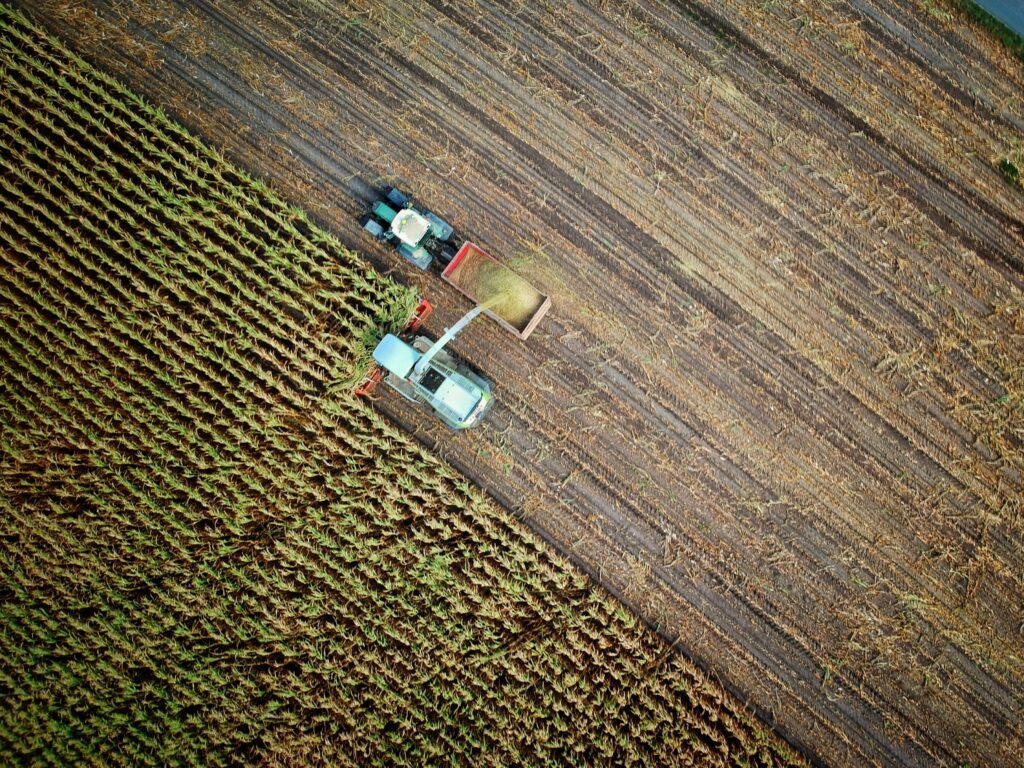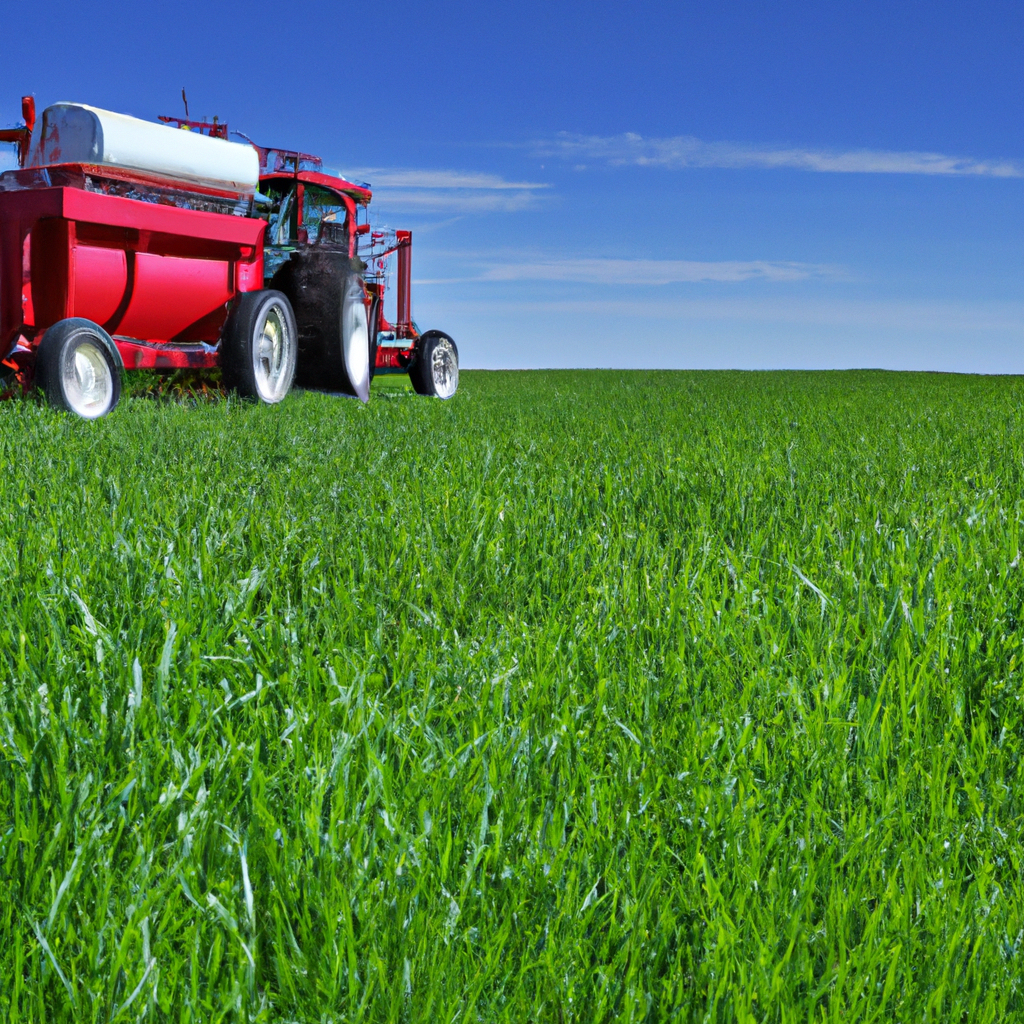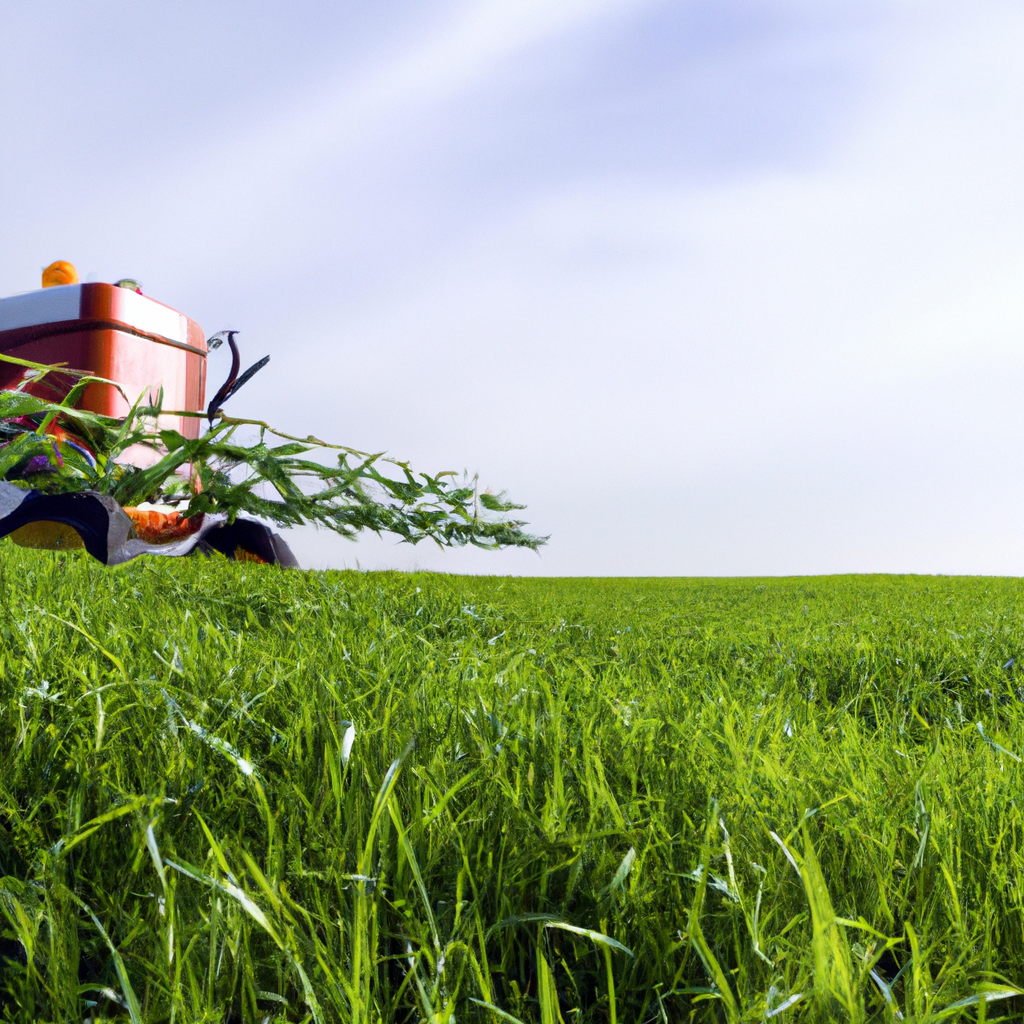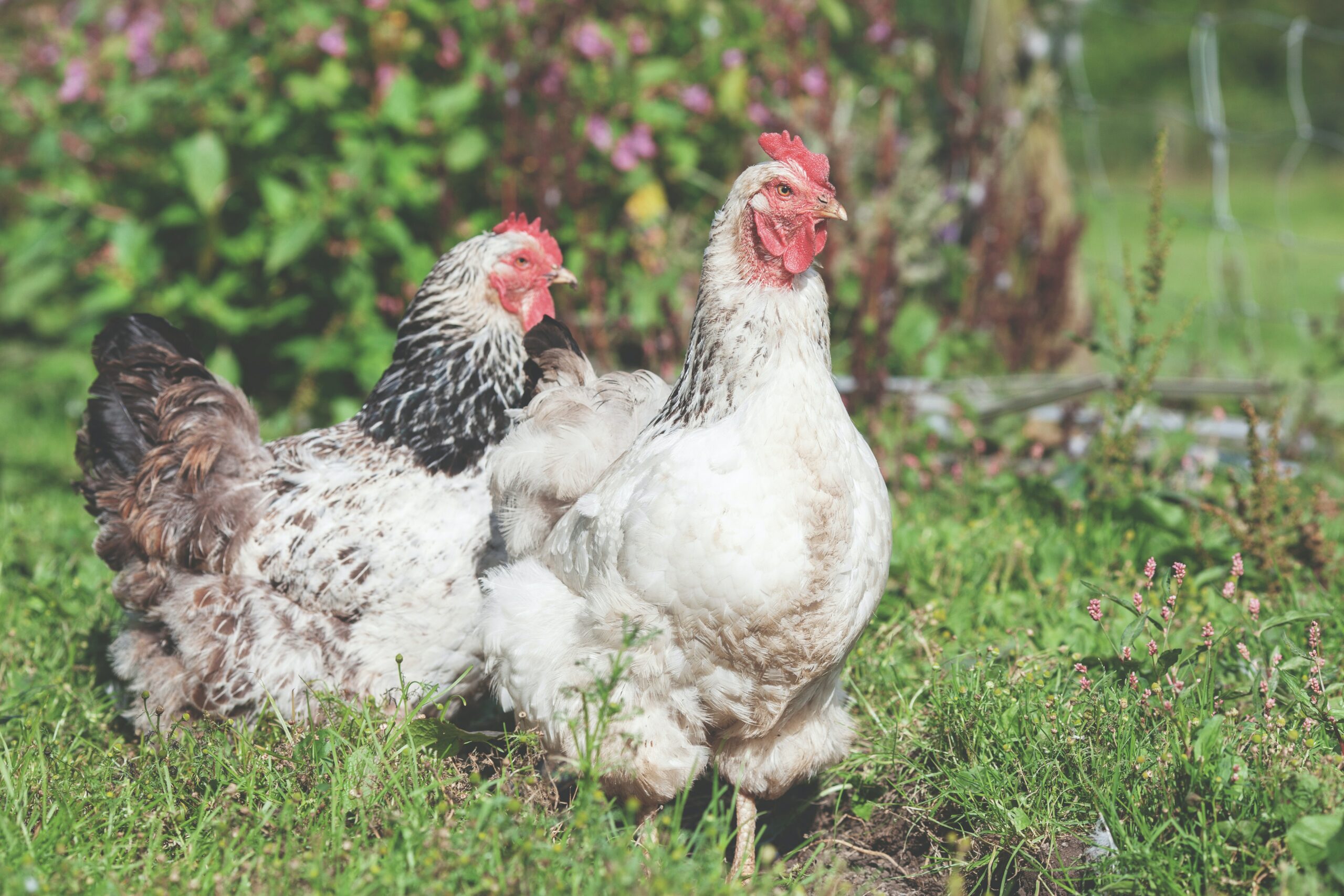Are you looking to maximize the productivity of your farm and ensure optimal growth for your crops? One key factor to consider is choosing the right commercial fertilizer spreader for your farm. The type of spreader you select can significantly impact the efficiency and effectiveness of your fertilization process, ultimately affecting your crop yield. With a wide range of options available in the market, it’s essential to understand your specific needs and requirements to make an informed decision. In this article, we will explore the different factors to consider when selecting a commercial fertilizer spreader, helping you find the perfect fit for your farm.

Factors to Consider When Choosing a Fertilizer Spreader
Size of Your Farm
When selecting a fertilizer spreader, one of the essential factors to consider is the size of your farm. The spreader you choose needs to match the acreage you will be covering. Smaller farms with limited fields may opt for a smaller spreader, while larger farms with extensive acreage will require a larger spreader to maximize efficiency and productivity.
Type of Fertilizer
Another crucial factor to consider is the type of fertilizer you will be using. Different spreaders are designed to handle specific types of fertilizers, such as granular, powder, or liquid. It is important to choose a spreader that is compatible with the type of fertilizer you plan to use to ensure optimal spreading and effectiveness.
Spread Pattern
The spread pattern determines how the fertilizer is distributed across the field. It is important to consider the spread pattern of a fertilizer spreader, as it can affect the uniformity and coverage of the application. Look for a spreader that offers a consistent spread pattern to ensure that your crops receive an even distribution of nutrients.
Application Rate
The application rate refers to the amount of fertilizer applied per unit of area. It is important to choose a spreader that allows you to control the application rate according to your specific needs. Some spreaders offer adjustable settings to achieve the desired application rate, while others come with a fixed rate. Consider your fertilization requirements and choose a spreader with the appropriate application rate capabilities.
Terrain and Landscape
The terrain and landscape of your farm play a significant role in determining the type of spreader you should choose. If your farm has sloping or uneven terrain, you may need a spreader with features that provide stability and balance to ensure safe operation. Additionally, if you have narrow areas or obstacles on your farm, consider a spreader that offers maneuverability and can navigate these challenging areas with ease.
Equipment Compatibility
Before making a purchase, ensure that the spreader is compatible with your existing equipment, such as your tractor or utility vehicle. Check the hitch requirements to make sure it will fit properly, and consider the power source compatibility to ensure smooth operation. Additionally, consider the weight capacity of the spreader to ensure that it can handle the load you intend to carry.
Budget and Cost
Budget is always a factor when choosing any equipment for your farm. Evaluate your budget and consider the long-term costs associated with the spreader. While a lower-priced option may seem appealing initially, it is crucial to consider the ongoing maintenance and replacement parts costs. Explore financing options if needed, to make an informed decision that aligns with your budget and long-term agricultural goals.
Ease of Use
For optimal efficiency and productivity, choose a spreader that is easy to use. Look for features such as control and adjustability, which allow you to customize the spreading process according to your requirements. Consider the steering and maneuverability of the spreader, as well as the visibility and safety features, to ensure operator comfort and safety during operation.
Durability and Quality
When investing in a fertilizer spreader, it is important to choose one that offers durability and quality. A well-built spreader is less likely to break down and will withstand the rigors of regular use on the farm. Look for spreaders made from high-quality materials and check for warranties or guarantees offered by the manufacturer. Investing in a reliable spreader will save you both time and money in the long run.
Maintenance Requirements
Before making a final decision, consider the maintenance requirements of the spreader. Look for a spreader that is easy to clean and store when not in use. Check for the availability of replacement parts and servicing options to ensure that you can easily maintain the spreader and address any repairs or maintenance needs that may arise. A spreader with low maintenance requirements will minimize downtime and keep your farm operations running smoothly.
Types of Fertilizer Spreaders
Broadcast Spreaders
Broadcast spreaders are the most common type of spreaders used in agriculture. They distribute fertilizer in a broad pattern over a wide area, making them ideal for larger farms or fields. These spreaders are typically mounted on the back of a tractor and use a spinning disc mechanism to evenly distribute the fertilizer as the tractor moves forward. Broadcast spreaders are known for their efficiency and ability to cover a large area quickly.
Drop Spreaders
Drop spreaders, as the name suggests, drop the fertilizer directly onto the ground in a controlled pattern. These spreaders are ideal for smaller farms or fields where precision and accuracy are essential. Drop spreaders are often used for targeted application, as they distribute the fertilizer in a narrow band directly underneath the spreader. This type of spreader is commonly used in areas where overlapping or drift is a concern.
Spinner Spreaders
Spinner spreaders, also known as centrifugal spreaders, use a spinning disc to distribute the fertilizer in a wide pattern. These spreaders are commonly used for larger farming operations and can cover a larger area compared to drop spreaders. Spinner spreaders are versatile and can handle a variety of fertilizers, including granular and powder types. They are often mounted on a tractor or utility vehicle and provide a consistent spread pattern.
Pneumatic Spreaders
Pneumatic spreaders use air pressure to propel the fertilizer onto the field. These spreaders are capable of distributing both granular and liquid fertilizers. Pneumatic spreaders are often used in specialized applications or in situations where precision and control are crucial. They are commonly used in areas such as golf courses or sports fields, where the spread pattern needs to be highly precise and uniform.
Determining the Size and Capacity of the Spreader
Farm Size and Acreage
The size of your farm and the acreage you will be covering are important factors to consider when determining the size and capacity of the spreader you need. Smaller farms with limited fields may not require a large spreader, while larger farms with extensive acreage will benefit from a spreader with a larger capacity. Assess the size of your farm and the amount of land you need to cover to make an informed decision.
Fertilizer Application Frequency
Consider the frequency at which you will be applying fertilizer to your crops. If you plan to fertilize your fields multiple times throughout the growing season, you may require a spreader with a larger capacity to minimize the time spent refilling. On the other hand, if you only apply fertilizer occasionally, a smaller capacity spreader may be sufficient to meet your needs.
Capacity Requirements
Evaluate the specific capacity requirements of your farm. The capacity of a spreader refers to the amount of fertilizer it can hold and distribute at once. Ensure that the spreader you choose has enough capacity to cover your fields efficiently. Consider the size of your equipment, such as your tractor or utility vehicle, as well, as it needs to be able to handle the weight and capacity of the spreader.
Work Efficiency
Efficiency is essential in agricultural operations. Consider the work efficiency of the spreader you are considering. Look for features that can enhance efficiency, such as a wide spread pattern or the ability to adjust the application rate. A spreader that can cover a larger area in less time will help you optimize your farm operations and increase productivity.
Evaluating the Spread Pattern
Uniformity
When evaluating a spreader’s spread pattern, consider the uniformity of the fertilizer distribution. A spreader that provides a uniform spread pattern will ensure that your crops receive an even distribution of nutrients. Look for a spreader that is designed to provide consistent coverage across the entire field, avoiding any areas with uneven application.
Precision
Precision is crucial when it comes to spreading fertilizer. A spreader that offers precise spreading capabilities will help prevent overlap or gaps in coverage. This is especially important in smaller fields or areas where precise application is necessary. Evaluate the spreader’s ability to distribute the fertilizer exactly where it is needed without wasting any product.
Control
The level of control offered by a spreader is an important consideration. Look for a spreader that allows you to adjust the spread pattern and application rate according to your specific requirements. The ability to control the spreader will enable you to customize the application to different areas of your farm, ensuring optimal nutrient distribution.
Overlap Prevention
Overlap can lead to over-fertilization, which can be detrimental to your crops. Consider a spreader that has features specifically designed to prevent overlap, such as adjustable spread widths or shut-off mechanisms. These features can help ensure that there is no unnecessary overlap during the spreading process, reducing the risk of over-fertilization.

Considering the Application Rate
Desired Rate of Application
Before choosing a spreader, determine the desired rate of fertilizer application for your crops. This will depend on factors such as crop type, soil condition, and nutrient requirements. Look for a spreader that offers the flexibility to adjust the application rate to meet your specific needs. Being able to control the rate of application will allow you to customize the amount of fertilizer being applied, ensuring optimal crop growth.
Adjustability and Accuracy
The adjustability and accuracy of a spreader play a vital role in achieving the desired application rate. Look for a spreader that allows you to fine-tune the application rate to ensure accuracy. Features such as adjustable spread rates or settings can help achieve the desired application rate with precision. The ability to adjust the spreader will enable you to match the rate of fertilizer application to the specific requirements of your crops.
Calibration System
A calibration system is an essential feature to consider, as it ensures the accuracy of the spreader’s application rate. Look for a spreader that includes a calibration system to facilitate the adjustment and calibration process. This system will help you validate and fine-tune the spreader’s settings to achieve consistent and accurate application rates, ultimately leading to better crop results.
Assessing the Terrain and Landscape
Slope and Elevation
The slope and elevation of your fields are important considerations when choosing a spreader. For farms with hilly or sloping terrain, it is crucial to select a spreader that provides stability and balance. Look for a spreader with features such as adjustable height or weight distribution to ensure safe operation on uneven surfaces. Additionally, consider the spreader’s ability to maintain a consistent spread pattern on slopes, as uneven land can affect the distribution of fertilizer.
Obstacles and Narrow Areas
If your farm has obstacles or narrow areas that need to be navigated, choose a spreader that offers maneuverability. Look for a spreader with a compact design and features such as easy steering or a narrow spread width. These features will allow you to effectively navigate around obstacles and ensure that the fertilizer is evenly distributed in narrow areas, such as between rows of crops.
Size and Shape of Fields
Consider the size and shape of your fields when selecting a spreader. If you have irregularly shaped fields, look for a spreader that can easily adapt to the changing contours and edges of the field. A spreader with adjustable spread widths or a flexible design will ensure that the fertilizer is evenly applied in all areas of the field, regardless of its size or shape.

Ensuring Equipment Compatibility
Tractor Hitch Requirements
Before purchasing a spreader, check the tractor hitch requirements to ensure compatibility. Different spreaders may require different types of hitch connections, such as three-point hitches or drawbar hitches. Make sure that the spreader you choose is compatible with your existing equipment to ensure a secure and proper attachment.
Power Source Compatibility
Consider the power source compatibility when choosing a spreader. Some spreaders are powered by the tractor’s power take-off (PTO) system, while others may require an independent power source, such as a hydraulic system. Verify that your tractor or utility vehicle can provide the necessary power requirements for the spreader you intend to purchase.
Weight Capacity
Evaluate the weight capacity of the spreader to ensure compatibility with your equipment and intended use. If you plan to carry a large amount of fertilizer or have a heavy-duty workload, choose a spreader with a higher weight capacity. Consider the weight capacity of both the spreader and your equipment to ensure safe and efficient operation.
Stability and Balance
Stability and balance are important factors to consider when choosing a spreader. Look for features such as a sturdy frame, wide wheelbase, or adjustable weight distribution to ensure stability during operation. A spreader that maintains stability and balance will minimize the risk of tipping over, particularly when operating on uneven or sloping terrain.
Budget and Cost Considerations
Initial Investment
Consider the initial investment required for the spreader when establishing your budget. The cost of a spreader can vary depending on its size, capacity, features, and brand. Evaluate your budget and compare different options to find a spreader that meets your needs while staying within your financial limitations. Remember to consider the long-term costs in addition to the initial investment.
Long-term Costs
In addition to the initial investment, consider the long-term costs associated with the spreader. This includes factors such as maintenance, replacement parts, and operational expenses. A spreader that requires frequent maintenance or has expensive replacement parts may end up costing more in the long run. Evaluate the reliability and durability of the spreader to ensure that it offers good value for money over its lifespan.
Available Financing Options
If the initial cost of a spreader exceeds your budget, explore available financing options. Some manufacturers or dealers may offer financing programs that allow you to spread out the cost over time. This can make the investment more manageable and enable you to purchase a spreader that meets your needs while accommodating your budget. Research financing options and consider their terms and interest rates before making a decision.

Ease of Use and Operator Comfort
Control and Adjustability
Choose a spreader that offers ease of control and adjustability. Look for features such as accessible controls or intuitive interfaces that allow you to easily adjust the spread pattern or application rate. The ability to finely tune the spreader’s settings will enable you to ensure accuracy and achieve the desired results.
Steering and Maneuverability
Consider the steering and maneuverability of the spreader, particularly if your farm has challenging terrain or narrow areas. Look for a spreader with features that enhance maneuverability, such as easy steering or a compact design. A spreader that can navigate through tight spaces or around obstacles with ease will reduce operator fatigue and enhance overall productivity.
Visibility and Safety Features
Operator visibility and safety should be a top priority when choosing a spreader. Look for a spreader that offers clear visibility of the spreading process, allowing you to monitor the distribution and make adjustments if necessary. Additionally, consider safety features such as guards or shields to protect the operator from potential hazards during operation. A spreader with adequate safety features will provide peace of mind and ensure a safe working environment.
Maintenance Requirements
Cleaning and Storage
Maintenance requirements are an important consideration when choosing a spreader. Look for a spreader that is easy to clean and store when not in use. Features such as removable parts or corrosion-resistant materials can simplify the cleaning process and extend the spreader’s lifespan. Consider the available storage space on your farm and ensure that the spreader can be stored safely and conveniently.
Replacement Parts and Availability
Availability of replacement parts is crucial when it comes to routine maintenance or repairs. Prioritize spreaders that have readily available replacement parts, either through the manufacturer or local suppliers. This will ensure that you can easily obtain the necessary parts to keep your spreader in good working condition and minimize downtime during maintenance or repairs.
Servicing and Repairs
Consider the servicing and repair needs of the spreader before making a final decision. Look for a spreader that is backed by a reputable manufacturer or dealer network that can provide servicing and repairs when needed. Evaluate the warranty offered by the manufacturer to ensure that you are covered in case of any unexpected issues. A spreader with reliable servicing and repair options will give you peace of mind and minimize disruptions to your farming operation.
In conclusion, choosing the right fertilizer spreader for your farm is a decision that requires careful consideration of various factors. The size of your farm, type of fertilizer, spread pattern, application rate, terrain and landscape, equipment compatibility, budget and cost, ease of use, durability and quality, and maintenance requirements all play a significant role in determining the most suitable spreader for your specific needs. By evaluating each of these factors and considering the options available, you can make an informed decision and invest in a fertilizer spreader that will optimize your farming operations, enhance productivity, and ensure the success of your crops.

